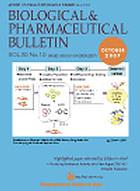
“Previous reports have demonstrated that the combination of Δ9-tetrahydrocannabinol (Δ9-THC) and cannabidiol (CBD) botanical extracts, which are the components of an already approved cannabis-based medicine, reduce the Alzheimer-like phenotype of AβPP/PS1 transgenic mice when chronically administered during the early symptomatic stage.
Here, we provide evidence that such natural cannabinoids are still effective in reducing memory impairment in AβPP/PS1 mice at advanced stages of the disease but are not effective in modifying the Aβ processing or in reducing the glial reactivity associated with aberrant Aβ deposition as occurs when administered at early stages of the disease.
The present study also demonstrates that natural cannabinoids do not affect cognitive impairment associated with healthy aging in wild-type mice.
The positive effects induced by Δ9-THC and CBD in aged AβPP/PS1 mice are associated with reduced GluR2/3 and increased levels of GABA-A Ra1 in cannabinoid-treated animals when compared with animals treated with vehicle alone.”









